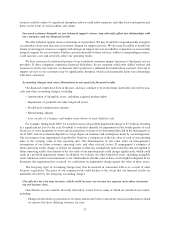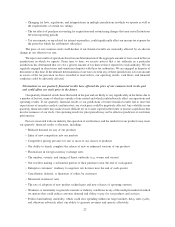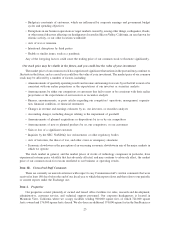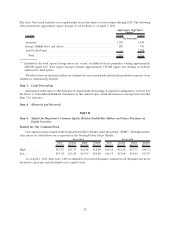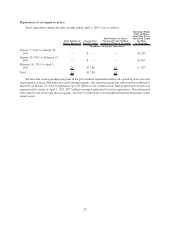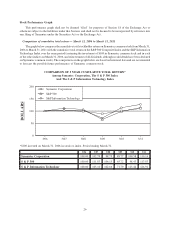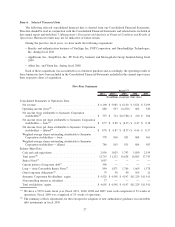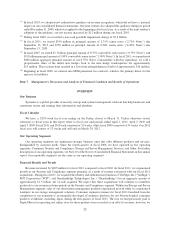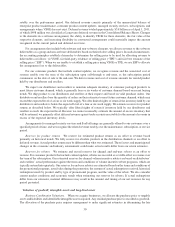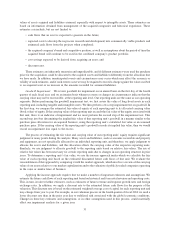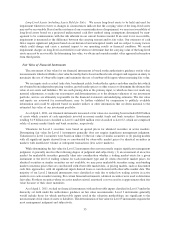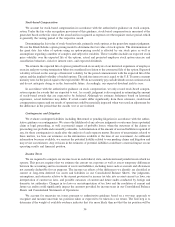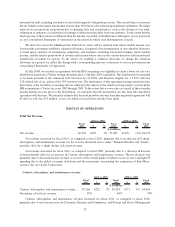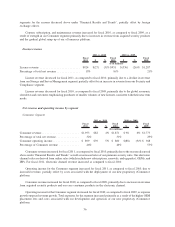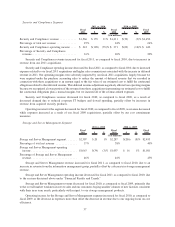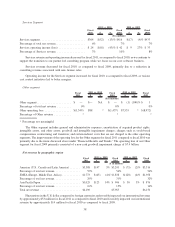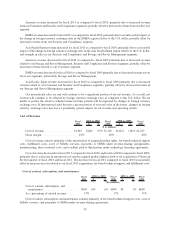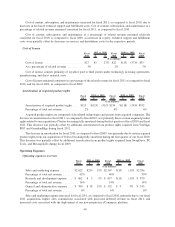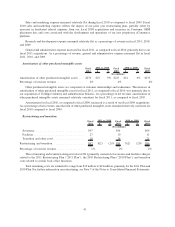Symantec 2011 Annual Report Download - page 101
Download and view the complete annual report
Please find page 101 of the 2011 Symantec annual report below. You can navigate through the pages in the report by either clicking on the pages listed below, or by using the keyword search tool below to find specific information within the annual report.values of assets acquired and liabilities assumed, especially with respect to intangible assets. These estimates are
based on information obtained from management of the acquired companies and historical experience. These
estimates can include, but are not limited to:
• cash flows that an asset is expected to generate in the future;
• expected costs to develop the in-process research and development into commercially viable products and
estimated cash flows from the projects when completed;
• the acquired company’s brand and competitive position, as well as assumptions about the period of time the
acquired brand will continue to be used in the combined company’s product portfolio;
• cost savings expected to be derived from acquiring an asset; and
• discount rates.
These estimates are inherently uncertain and unpredictable, and if different estimates were used the purchase
price for the acquisition could be allocated to the acquired assets and liabilities differently from the allocation that
we have made. In addition, unanticipated events and circumstances may occur which may affect the accuracy or
validity of such estimates, and if such events occur we may be required to record a charge against the value ascribed
to an acquired asset or an increase in the amounts recorded for assumed liabilities.
Goodwill Impairment. We review goodwill for impairment on an annual basis on the first day of the fourth
quarter of each fiscal year, and on an interim basis whenever events or changes in circumstances indicate that the
carrying value may not be recoverable, at the reporting unit level. Our reporting units are the same as our operating
segments. Before performing the goodwill impairment test, we first assess the value of long-lived assets in each
reporting unit, including tangible and intangible assets. We then perform a two-step impairment test on goodwill. In
the first step, we compare the estimated fair value of equity of each reporting unit to its allocated carrying value
(book value) of equity. If the carrying value of the reporting unit exceeds the fair value of the equity associated with
that unit, there is an indicator of impairment and we must perform the second step of the impairment test. This
second step involves determining the implied fair value of that reporting unit’s goodwill in a manner similar to the
purchase price allocation for an acquired business, using the reporting unit’s calculated fair value as an assumed
purchase price. If the carrying value of the reporting unit’s goodwill exceeds its implied fair value, then we would
record an impairment loss equal to the excess.
The process of estimating the fair value and carrying value of our reporting units’ equity requires significant
judgment at many points during the analysis. Many assets and liabilities, such as accounts receivable and property
and equipment, are not specifically allocated to an individual reporting unit, and therefore, we apply judgment to
allocate the assets and liabilities, and this allocation affects the carrying value of the respective reporting units.
Similarly, we use judgment to allocate goodwill to the reporting units based on relative fair values. The use of
relative fair values has been necessary for certain reporting units due to changes in our operating structure in prior
years. To determine a reporting unit’s fair value, we use the income approach under which we calculate the fair
value of each reporting unit based on the estimated discounted future cash flows of that unit. We evaluate the
reasonableness of this approach by comparing it with the market approach, which involves a review of the carrying
value of our assets relative to our market capitalization and to the valuation of publicly traded companies operating
in the same or similar lines of business.
Applying the income approach requires that we make a number of important estimates and assumptions. We
estimate the future cash flows of each reporting unit based on historical and forecasted revenue and operating costs.
This, in turn, involves further estimates, such as estimates of future revenue and expense growth rates and foreign
exchange rates. In addition, we apply a discount rate to the estimated future cash flows for the purpose of the
valuation. This discount rate is based on the estimated weighted-average cost of capital for each reporting unit and
may change from year to year. For example, in our valuation process in the fourth quarter of fiscal 2010 we used a
lower discount rate than in the prior year due to stabilized risk associated with the global economic conditions.
Changes in these key estimates and assumptions, or in other assumptions used in this process, could materially
affect our impairment analysis for a given year.
31


